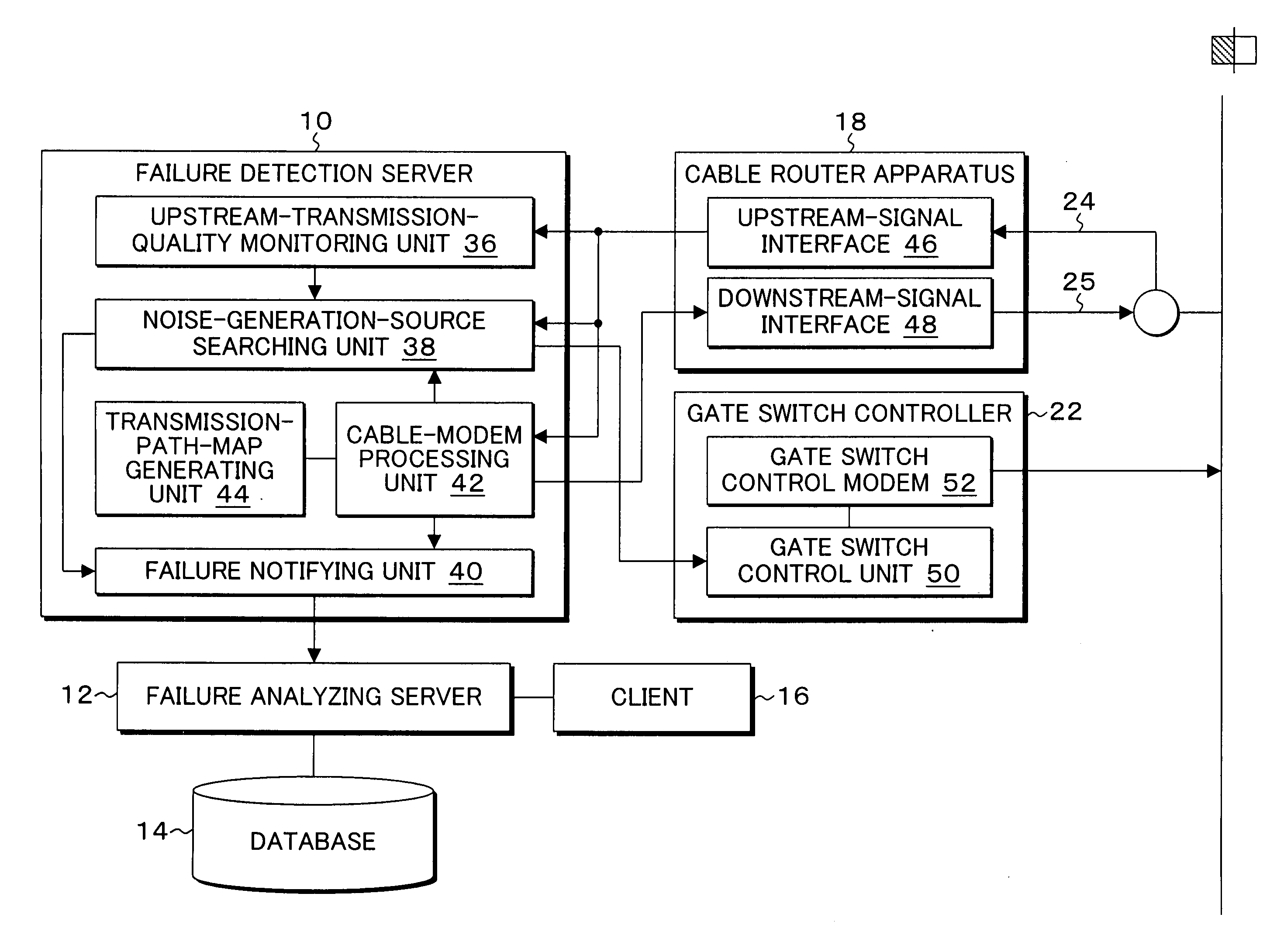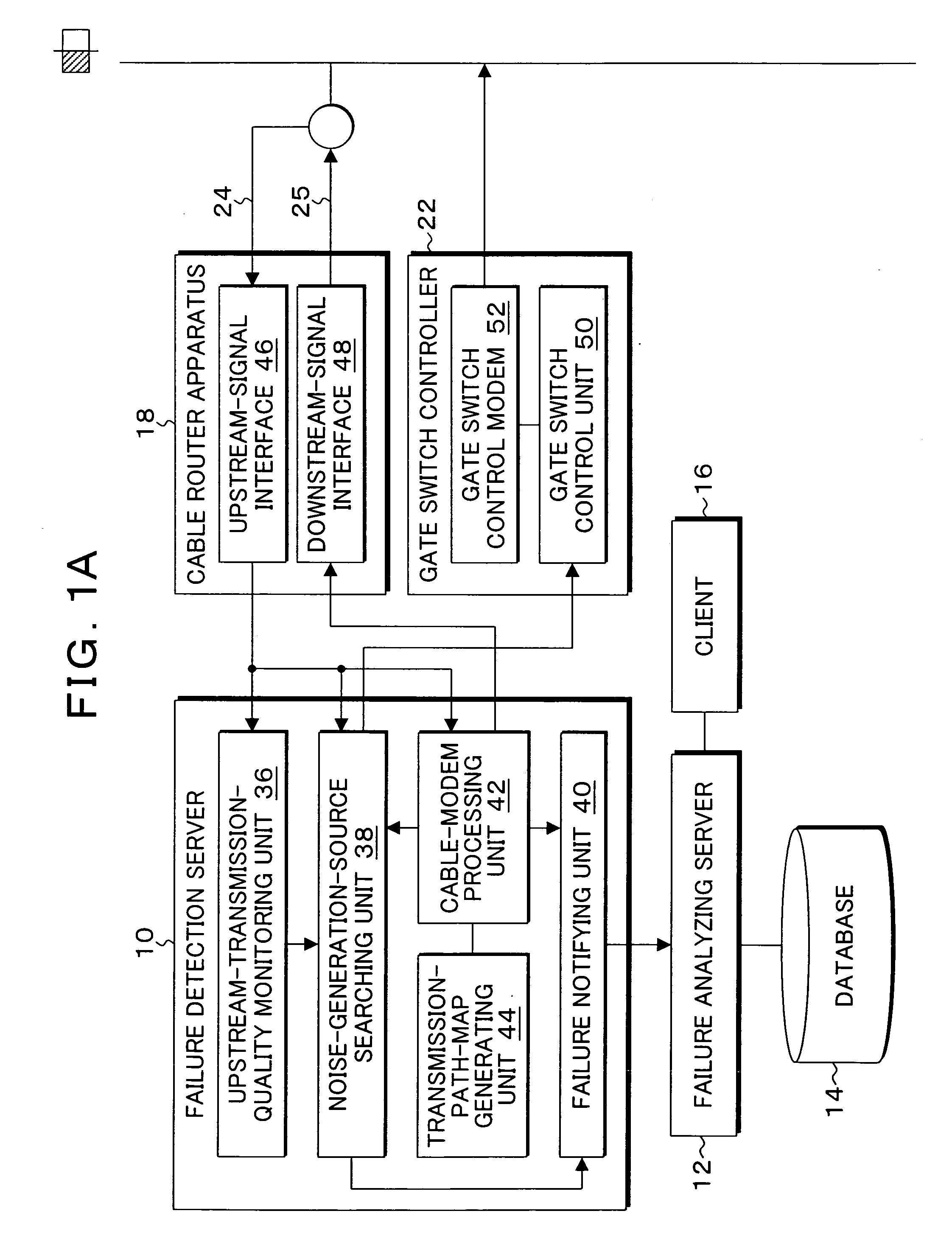Apparatus, method, and program for CATV transmission-path monitoring
- Summary
- Abstract
- Description
- Claims
- Application Information
AI Technical Summary
Benefits of technology
Problems solved by technology
Method used
Image
Examples
Embodiment Construction
[0083]FIGS. 1A and 1B are block diagrams depicting an embodiment of an upstream-ingress-noise monitoring system according to the present invention. In FIGS. 1A and 1B, following a headend 20, optical nodes 26-1 to 26-4 are provided. Representing, this is depicted in the optical node 26-1, a CATV transmission path having a tree structure starting from that optical node is provided from upstream to downstream. In this example, following the optical node 26-1, via a bridger gate switch (hereinafter simply referred to as a “gate switch”) 30-1, a trunk branch amplifier (TBA) 28 of a bidirectional amplification type is provided, and is respectively connected to collective housings 34-1 to 34-3 via branch-terminal gate switches 30-2 to 30-4 of the trunk branch amplifier 28. Also, branch lines of the trunk branch amplifier 28 have cable modems 32-1 and 32-2 respectively connected thereto. To the headend 20, a fault detection server 10 is connected via a cable router apparatus 18. To the fau...
PUM
 Login to View More
Login to View More Abstract
Description
Claims
Application Information
 Login to View More
Login to View More - R&D
- Intellectual Property
- Life Sciences
- Materials
- Tech Scout
- Unparalleled Data Quality
- Higher Quality Content
- 60% Fewer Hallucinations
Browse by: Latest US Patents, China's latest patents, Technical Efficacy Thesaurus, Application Domain, Technology Topic, Popular Technical Reports.
© 2025 PatSnap. All rights reserved.Legal|Privacy policy|Modern Slavery Act Transparency Statement|Sitemap|About US| Contact US: help@patsnap.com



